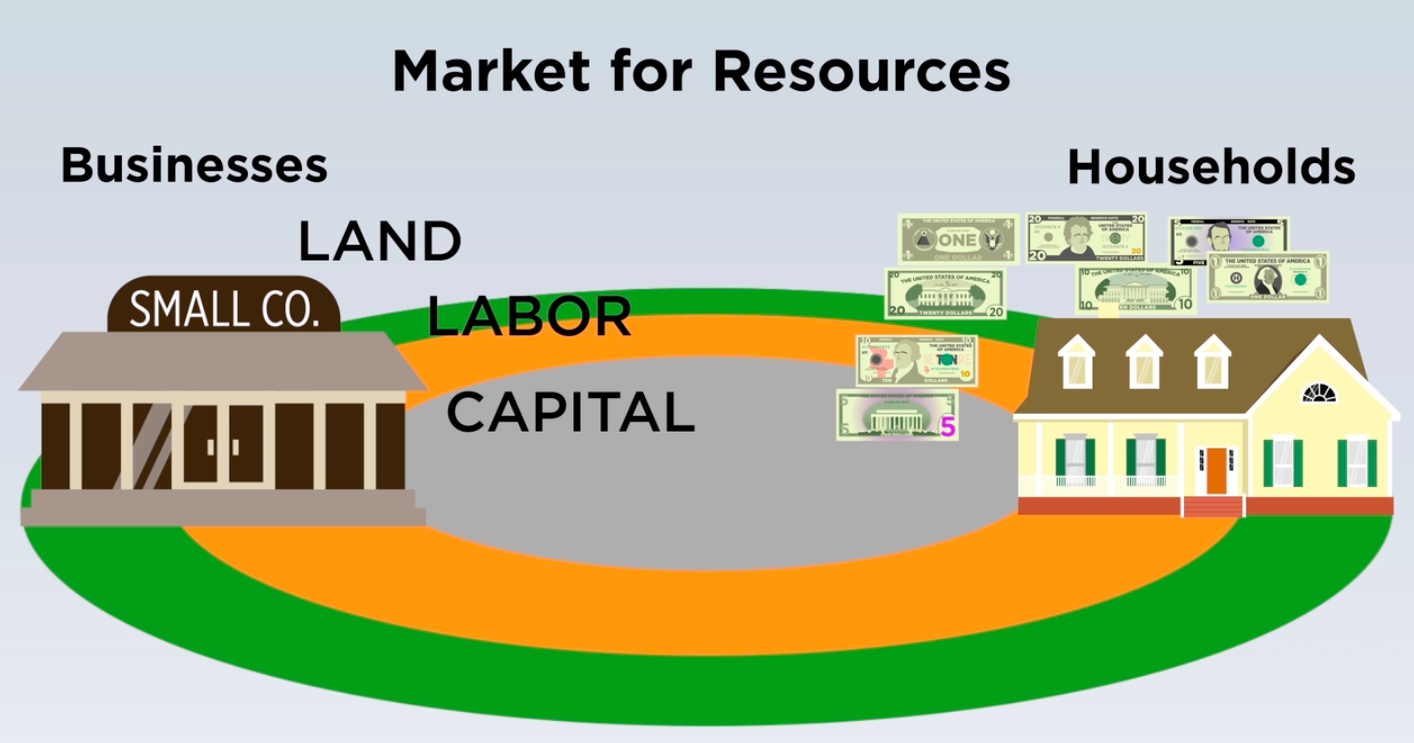The Circular Flow Model and What it Means to You (Remix)

The title of the picture is Market for Resources. It is a circular flow model with businesses on the left with their land, labor, and capital and households on the right with money to buy from the businesses.
This lesson and video will explain to the student the circular flow model. The student will learn how households and businesses interact in the market for resources and in the market for goods and services, and see how money keeps the whole process moving.
Learning Objectives
By the end of this lesson, students will be able to:
- explain the circular flow that shows how consumers (households), businesses (producers), and markets interact.
- explain how resources, goods and services, and money flow continuously among households, businesses, and markets in the United States economy.
- explain how the circular flow diagram is a way of visualizing and categorizing activity within an economy. Goods, services, and resources flow in one direction. Money flows in the opposite direction.
Essential Question
Why are there goods and services for sale?
Procedure:
1. Introduction
This lesson introduces the circular flow model to students by creating a model in the classroom and through a video from the Federal Reserve Bank of St. Louis. After watching the video clip, students will draw their own circular flow models to assess their understanding.
2. Explore
Students should research the basic vocabulary of forms of exchange, producers, businesses, consumers, goods and services. Students should also have a good understanding of supply and demand after this lesson. Students are to read the article and watch the video on Circular Flow. Another resource for students to use is the powerpoint on circular flow.
3. Explain
Tell the students they will be able to draw their own circular maps of the flow of money and resources from households, businesses, and
government to the markets with specific examples of each. Students can search the Internet to find examples of each item and market to illustrate their maps.
4. Assess
Driving Questions:
- How does the circular flow model illustrate the flow of money in the economy?
- What exchanges are made in the circular flow model between households, businesses, and government?
Directions: Use what the students have read, viewed and the notes they have taken to draw a circular flow map in their interactive notebook. After they have completed their flow maps, have them use different colors to differentiate the different directions of the flow (suggest green for the revenue, money, wages).
Writing assignment: Have students explain in their own words the answers to the driving questions in an essay.
Revision and Adaptation. Provided by: Federal Reserve Bank of St. Louis and the Federal Reserve Bank of Atlanta Title of Work: Circular Flow
License: Creative Commons Attribution-NonCommercial-NoDerivs 4.0 